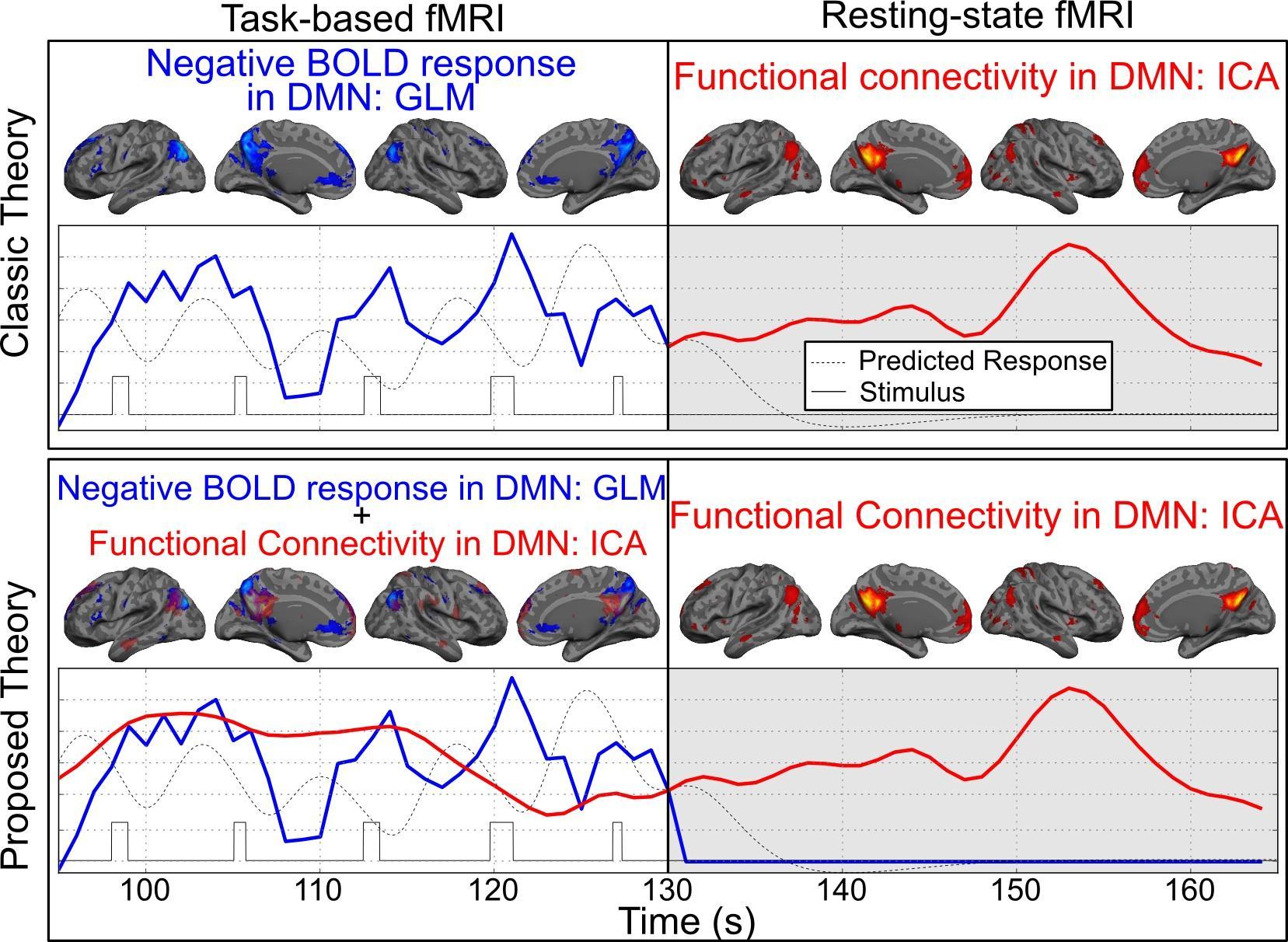
Overview
This project introduces the hierarchical structure in the brain's large-scale networks. We started this project first by using negative BOLD response as a new tools to examine hierarchical structure of the Default mode network. We are currently investigating the hierarchical structure of the visual networks in the brain. The ultimate goal is to show that the functional connectivity networks are representative of lower-level neurophysiological processes which might not be directly related to task performance. Instead, they provide the required infrastructure for the task-based co-activation networks.
The topography of the default mode network (DMN) can be obtained using two different functional magnetic resonance imaging (fMRI) techniques: spontaneous but organized synchrony in the low-frequency fluctuations of resting-state fMRI (rs-fMRI), known as “functional connectivity,” or from the consistent and robust deactivations in task-based fMRI (tb-fMRI), here referred to as “negative BOLD response”. These two methods are fundamentally different, but on the basis of topographic similarity their results have often been used interchangeably to reflect brain’s resting-state, baseline or intrinsic activities, and the current consensus in the field appears to be that they are both representative of the same neurophysiological processes. However, recent evidence suggests that these two fMRI techniques measure two separate but overlapping processes (see Figure above). For example, our preliminary results suggest that the spatial and temporal expression of the DMN’s functional connectivity remains intact during task performance and it is equivalent to the expression of the functional connectivity at rest; other groups report comparable findings. Also, in our recent work we were able to impose an alteration in the task-based negative BOLD response in the DMN regions by shifting cognitive attention from one sensory stimulus to another, but this manipulation did not cause any changes to the underlying functional connectivity of the DMN.
Both functional connectivity and negative BOLD response in DMN regions have been reported to be disrupted with normal aging, the pre-clinical stage of Alzheimer’s disease, mild cognitive impairment and Alzheimer’s disease. However, since the assumption in the field is that the DMN’s functional connectivity and negative BOLD response are representative of the same underlying neurophysiological process, there has been no study, to our knowledge, investigating the cascade of the events in which functional connectivity or negative BOLD response get disrupted. We hypothesize that brain activities are executed by a set of functional sub-systems that have a hierarchical structure such that functional connectivity is representative of a lower level process than is the task-based network of negative BOLD response. Functional connectivity networks are representative of the processes that provide the underlying infrastructure for the functional sub-systems represented by the task-based network of BOLD response. If this is the case, a disruption in the task-based BOLD response should not necessarily be accompanied by an alteration in the underlying functional connectivity (as we have shown in our preliminary data below), whereas any disruption in the functional connectivity must result in an alteration in the task-based BOLD response. We aim to test our hypothesis using three experimental designs.
Related Publication
Coming soon
Software Released
A Python code will be shared upon completion

